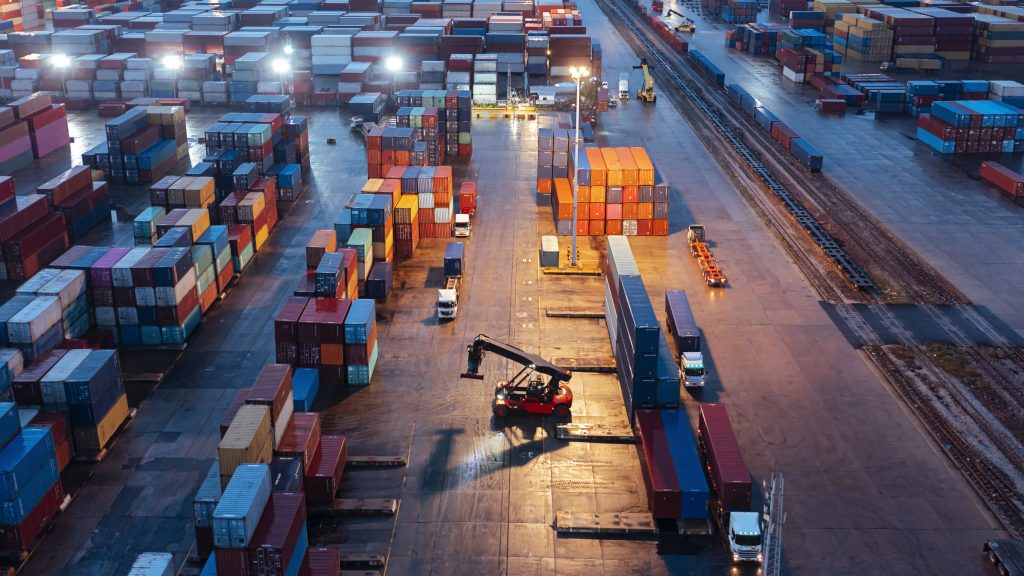
VAT and transfer pricing adjustments: the worst of both worlds?
VAT and transfer pricing adjustments: the worst of both worlds?
In due course, the EU Court of Justice (ECJ) may shed some light on the VAT intricacies of transfer pricing (TP) adjustments. In Arcomet, the Bucharest Court of Appeals asked the ECJ whether the amounts included in yearly equalisation invoices to ensure arm’s length pricing within a group constitute payment for VAT relevant services. Should VAT indeed be due, the question was raised whether the tax authorities could require additional documentation for the deduction of such VAT. If anything, Arcomet demonstrates that not all VAT authorities apply a light touch when transfer pricing (TP) corrections are involved. Calculated corrections and TP-generated invoices could have real life, and adverse, VAT consequences.
Relevant facts
The case involves the Arcomet group – a global group in the crane rental sector. The Belgian parent company (Arcomet Belgium) sought suppliers for its group company in Romania and negotiated contractual terms with these suppliers. The various responsibilities and risks for selling/purchasing and renting cranes were laid down in a contract between the respective Arcomet companies. Arcomet Belgium assumed the greatest economic responsibility for achieving maximum occupancy of the crane fleet, quality and safety management and maximising the prices offered to customers,
This contract was prepared in order to comply with a TP study carried out for Arcomet Belgium. The contract thus provided a yearly correction mechanism as to bring the profit of Arcomet Romania within an ‘at arms’ length’ range. If the provisional financial statements resulted in a profit which was too high, Arcomet Belgium would issue an equalisation invoice to bring Romania’s profit back within an arms’ length range, and vice versa if the Romanian profit was below the acceptable range. VAT was not addressed in the TP study, nor in the contract.
Following the above mechanism, Arcomet Belgium issued equalisation invoices for 2011, 2012 and 2013. The Romanian VAT authorities took the position that these invoices related to services supplied to Arcomet Romania. A reverse charge applied, so Romanian VAT was due. On the other hand, this VAT could not be deducted, as Arcomet failed to produce documents ‘justifying the supply of the services and the need to carry them out for the purposes of taxable transactions”. This resulted in substantial VAT assessments, now challenged by Arcomet Romania. In the course of this appeal, the Romanian Tax Court raised preliminary questions to the ECJ on the VAT aspect of the TP-adjustments at hand.
It is now up to the ECJ to decide whether the TP-invoices, on one hand, trigger reverse charged VAT obligations while, on the other hand, this VAT can not be deducted because the invoices are not elaborate enough. This would result in a ‘worst of both worlds’ scenario. Alternatively should the invoices remain outside the scope of VAT altogether?
VAT guidance needed
Guidance from the ECJ would be welcome, as the VAT aspects of TP adjustments are far from clear. In this respect we refer to a report of the EU Value Added Tax Committee in 2017, where the issue was addressed, but certainly not resolved. Adjustments could represent a remuneration for a specific (new) supply or represent an increase (or decrease) of the VAT relevant remuneration for goods or services already supplied, especially when actual payments are made. On the other hand, a mere adjustment of taxable profit (for CIT purposes) would likely remain outside the scope of VAT. Much depended on the specific TP-arrangements as agreed between parties. In Arcomet the ECJ may finally provide some VAT guidance, but this guidance will likely be restricted to a rather specific TP-arrangement.
Liabilities triggered by inconsistent VAT reporting
There is something noteworthy about the Arcomet case. The Arcomet companies apparently struggled with the VAT reporting of the TP-corrections. Arcomet BE initially reported the TP-corrections as payments for (intra-EU) supplies of goods. In 2015, this was corrected: the invoices were now reported as being issued for intra-EU services. Arcomet Romania on its turn, declared an intra-EU purchase of services for the 2011 and 2012 adjustments. The 2013-adjustment was, however, not included in any VAT return at all, as it was considered the transactions were outside the scope of VAT. Also, the invoices issued referred to the rather opaque concept ‘equalisation invoice’ instead of describing the services provided (if any). We can imagine that such inconsistent approaches will be challenged by VAT authorities.
Recommendations
If anything, Arcomet is a cautionary tale about the importance of not neglecting VAT when making TP adjustments. Performing a VAT analysis upfront and acting accordingly, may help in minimising VAT liabilities afterwards. The ECJ may provide some helpful guidance in due course. What is clear, however, is that this issue is on the agenda of tax authorities. It should be on your agenda, too.

Brazil’s 2026 tax reform: preparing for transition
Starting in January 2026, Brazil will enter the transition phase of its most ambitious tax reform in decades — a structural overhaul that will reshape the taxation of goods and services. While the reform aims to simplify one of the world’s most complex tax systems, its scale and impact cannot be underestimated: it will redefine […]

Forvis Mazars Sweden tax litigation group: case study
The European Court of Justice (ECJ) holds that the EU Customs Code does not require exceptional circumstances to extend a temporary admission of goods beyond the originally agreed term if the total period of admission does not exceed 24 months. A company was charged duty and VAT for temporarily importing a racing car. On 12 […]

Romania speeds up in the race to improve VAT collection
The Romanian Tax Authorities (RTA) continue racing to reduce the VAT deficit and fraud in respect of VAT collection. According to the latest VAT Gap Report published by the European Commission (see here and here), seven European states remain above the EU median for their VAT gap in 2021. VAT collection remains a significant challenge in Romania, […]

Navigating Japanese transfer pricing reforms
In response to the Organisation for Economic Co-operation and Development (OECD) revisions to transfer pricing of financial transactions, the Japanese transfer pricing administrative guidelines have been reformed in Japan effective 1 April 2023. The latest revisions clarify the application of transfer pricing to financial transactions and give more precise guidance on intercompany transactions related to […]

New OECD guidance on Amount B (BEPS 2.0) – where are we?
On 19th February, the OECD/G20 Inclusive Framework on Base Erosion and Profit Shifting published its report on Amount B under Pillar 1, which intends to provide a simplified and streamlined approach to transfer pricing compliance for entities engaged in baseline marketing and distribution activities. This presents the opportunity for a simplified route for companies in […]

Beta Healthcare International Limited vs. Commissioner of Tribunal – A Battle Of Transfer Pricing Methods
On 9 February 2024, the Tribunal issued a ruling in the case KETAT 143 (KLR) between the appellant Beta Healthcare International Limited (Beta Kenya) and the respondent the Commissioner of Legal Services and Board Coordination (KRA). The matter in dispute was the appropriate transfer pricing method to apply to intragroup sales, with the KRA arguing […]

What effect do the Pillar 1 Amount B developments have on Transfer Pricing?
For more information on the topic join our webinar on 17th of September. One of the most debated topics in the international tax arena is Pillar 2, the global minimum corporate tax. Alongside this, work on Pillar 1 continues at full speed under the initiative of the OECD. In this article, we aim to provide […]

The current transfer pricing environment in the banking and asset management sector, and the importance of regular review
The financial services sector remains firmly in the spotlight of global tax authorities and prudential regulators. Whether it is HMRC in the UK or the Internal Revenue Service (IRS) in the US, understanding how money moves between regulated entities and overseas affiliates is a hot topic. In this respect, regular reviews of how arrangements are […]

Transfer pricing legislation in the Republic of Moldova
For the first time, the Republic of Moldova has introduced the Tax Code provisions on transfer pricing and the arm’s length principle. These measures are expected to apply from 1 January 2024, with an aim to bring local legislation closer to both the EU law and the recommendations of the Organisation for Economic Co-operation and […]

ESG and financial transactions from a transfer pricing perspective
In 2021, the European Central Bank (ECB) published its final guide on climate-related and environmental risks for banks. It aimed at enhancing the industry’s awareness and preparedness for managing climate-related and environmental risks. The risks mentioned are commonly related to two main types: physical risk and transition risk. They have an impact on both economic […]

Protecting reputation and managing communication on tax matters for ESG ratings and Pillar 2 disclosures
Over the last decade, the Organisation for Economic Co-operation and Development (OECD) and the European Union (EU) have made significant developments regarding tax transparency regimes and the exchange of information between tax authorities. However, these developments are being taken further in the drive for increased transparency and public availability of such information, particularly in relation […]

What is the future of taxation in Europe: questioning the usefulness of all anti-avoidance measures
Pillar 2, which is the Global Anti-Base Erosion Rules (GloBE) minimum tax project, and the BEFIT initiatives are considered likely to reduce some tax planning opportunities respectively at worldwide and EU levels, and thus reduce the need to address them through anti-avoidance rules. Therefore, it may be reasonable to consider whether all these anti-avoidance rules […]

What is the future of taxation in Europe: impact on multinational enterprises
Initiatives mentioned in the previous article already affect and will further affect multinational companies in a significant way. The first step for multinational companies to consider is how to build stakeholders’ understanding of the impact these changes in domestic legislation will have on the business. In the case of Pillar 2, for example, this means […]

What is the future of taxation in Europe: state of play for ongoing initiatives
The international tax landscape has undergone major changes over the past few years which is set to have a significant impact on the overall tax architecture. At both international and European Union (EU) levels, several initiatives have been pursued aimed at aligning tax collection with the location of economic activity and achieve a minimum level […]

Polish leap in digitisation – mandatory e-invoicing coming soon
Originally, mandatory e-invoicing was supposed to come into effect as early as 2023, but due to the complexity of the application of e-invoicing procedures and objections of entrepreneurs, the deadline was postponed until July 2024. Nevertheless, it should be kept in mind that this is not a distant prospect. As of 1 July 2024, the […]

The impact of rising interest rates on transfer pricing
With rising inflation and multiple key interest rate increases, multinational enterprises should consider reviewing the prices of their intercompany financing transactions, which may no longer align with the arm’s length principle. The quick rise in interest rates may have created significant divergence between the prices applied by a multinational enterprise on its intercompany financing transactions […]

Preparing for the Carbon Border Adjustment Mechanism (CBAM)
Following the adoption of CBAM by the European Union (EU) parliament, businesses impacted will have a transition period beginning 1 October 2023. If your business imports goods and materials from outside the EU and is in scope of CBAM, you need to prepare as a matter of urgency. Businesses not yet covered by CBAM should […]

Where is the UK Diverted Profits Tax and the Profit Diversion Compliance Facility now?
On 7 February 2023, the UK tax authority HM Revenue & Customs (HMRC) released its Transfer Pricing and Diverted Profits tax statistics for the 2021 – 2022 tax year. The statistics clearly demonstrate that both transfer pricing and Diverted Profits Tax (DPT) continue to yield significant income for HMRC and that these areas are likely […]

Romania’s race to improve VAT collection rates
The Romanian tax authorities have introduced a series of measures in an attempt to reduce its VAT deficit and combat the impact of fraud on VAT collection. According to the European Commission VAT Gap Report, in 2020, VAT collection within the European Union (EU) increased by around 2% compared to the previous years. However, while […]

Making sales in Canada from abroad: a new indirect tax world
Prior to July 2021, if you were not carrying on a business in Canada you did not have to worry about Canadian sales taxes. Those sales were said to be out of jurisdiction for Canada and therefore by virtue of the applicable sales tax laws not subject to Canadian sales taxes. Well, those days are […]

Can Turkey make progress on transfer pricing audits?
National differences and approaches to transfer pricing are evident all over the world. In particular, tax jurisdictions in developed countries have now taken quite advanced steps in approaching complex transfer pricing situations from a technical debate perspective. Whereas in some countries, including Turkey, the concept of transfer pricing could be more advanced. Although Turkey has […]

Latest development of APA in China – simplified procedures of unilateral APA
Background The State Administration of Taxation (“STA”) has made a continuous effort to promote Advanced Pricing Arrangement (“APA”). On 26 July 2021, the STA issued STA Public Notice [2021] No.241 (“Bulletin 24”), which sets forth simplified procedures for unilateral APA for enterprises that meet certain conditions. On 29 October 2021, it also published the China […]

VAT alert in Croatia – change in tour operators’ margin scheme regulations for non-EU travel agencies
Starting from January 2021, Tour Operators’ Margin Scheme (TOMS) is no longer applicable to entities that have established their businesses or have a fixed establishment from which they render the services outside the European Union (EU). In this regard, non-EU companies should be aware of the new taxation approach applied to them under the TOMS […]

New CEE tax guide outlines fundamental changes and long-term trends
Providing information on taxation in 22 Central and Eastern European (CEE) states, the latest Mazars CEE tax guide analyses long-term taxation trends and fundamental tax regime changes in each country, both now and in previous years.

The Google tax: The UK story, 7 years later
The Diverted Profits Tax (DPT), or what the media have dubbed the Google tax, was introduced in 2015 to dissuade and counteract contrived arrangements used by large multinational groups that divert profits from the UK and erode the UK tax base.

New Transfer Pricing Bill Passed in Israel
Transfer Pricing Bill in Israel passes third reading in June 2022 and is approved. What are the implications for businesses in Israel? In June 2022, the new transfer pricing bill was approved. This is another step towards the Israel Tax Authorities (ITA) efforts to streamline the ITA’s supervision and control of transfer pricing relating to […]

Questions raised on Italy’s penalty protection regime
Following Italy’s new transfer pricing (TP) requirements1 introduced on 23 November 2020, there has been much discussion as to whether the taxpayer may benefit from penalty protection that also covers additional withholding tax otherwise due when the Italian tax authorities (ITA) perform adjustments that recharacterise the nature of a transaction. A Circular2 letter was then […]

Are you ready for the GloBE tax challenges?
On 14 March 2022, the OECD published a comprehensive commentary and illustrative examples of how implementing the Global Anti-Base Erosion Model Rules (GloBE rules) could look. In this blog, we discuss the GloBE rules and examine how the rules apply and filing requirements. On 20 December 2021, the OECD published model rules that member countries […]

Tax compliance and incentives during martial law in Ukraine
A crucial number of Ukrainian companies (including subsidiaries of international enterprises) experienced negative business and financial impacts as a result of the Russian invasion of Ukraine which started on 24 February 2022. The urgent relocation of staff to other regions of Ukraine and abroad, interruption of access to internal databases, IT systems, and paper documents […]

Turkey issued the first legislation in relation to the Mutual Agreement Procedure (MAP)
With Law No. 7338 on Turkish Tax Procedure Law (TPL) and Amending Certain Laws (“Law No. 7338”) published in the Official Gazette dated October 26, 2021, a domestic regulation was made for the first time regarding the mutual agreement procedure (MAP) in Turkey. The Turkish Revenue Administration (TRA) aims to eliminate uncertainties regarding the application […]

Swiss VAT: a system similar to the EU and yet with many differences
The Swiss and European VAT systems are similar in many respects, but there are also differences that can lead to serious adverse tax consequences. Switzerland, for the most part, follows unilaterally the same broad lines as neighboring countries, thus trying to avoid VAT mismatches. However, when European countries have transposed the EU Directive they have […]

What to expect from South Africa’s advance pricing agreement programme
A proposed model for establishing an advance pricing agreement (“APA”) programme in South Africa (“SA”) was issued by the South African Revenue Authority (“SARS”) during December 2021. This article highlights some notable aspects of this proposed programme, by comparing it to those of other jurisdictions. An APA is an agreement between a taxpayer and a […]

Takeaways from the latest edition of the OECD Transfer Pricing Guidelines
On 20 January 2022, the Organisation for Economic Co-operation and Development (OECD) released the 2022 edition of the OECD Transfer Pricing Guidelines for Multinational Enterprises and Tax Administrations (OECD TPG). This blog provides a summary of the revised Chapters of the OECD TPG, and highlights what tax advisors and taxpayers need to know. The revised […]

Transfer pricing: is Africa ready for advance pricing agreements?
Advance pricing agreements (“APAs”) could provide taxpayers and revenue authorities with some certainty during the unprecedented times that we are living in. The African APA landscape is however underdeveloped, but some recent developments in South Africa (“SA”) indicate that this may be changing. On 18 December 2020, the Organisation for Economic Co-operation and […]

The benefits of VAT Groups in Poland
From 1 January 2022, VAT taxpayers will be able to create a VAT Group in Poland. The act implementing this “Polish Deal” introduced the separate institution of a VAT Group, previously unknown in the Polish tax system, enabling consolidated VAT accounting within a capital group. What are the benefits of establishing a VAT Group in Poland?The creation […]

New transfer pricing requirements in Italy
On 26 November 2021, the Italian tax authorities (“ITA”) issued the final version of Circular Letter no.15/E (the “Circular”), providing clarification on the new transfer pricing requirements introduced by Measure no. 360494 (“New Measure”) on 23 November 2020. This article analyses the most important amendments to the transfer pricing documentation rules in Italy, and what […]

Nigeria’s simplified compliance regime for non-resident suppliers
Many tax jurisdictions encounter difficulties exercising their tax legislation against taxpayers who do not reside in their jurisdictions. The adoption of a simplified registration and collection mechanism is one of the approaches suggested by the OECD to address these difficulties. The simplified compliance regime is more appropriate for business-to-consumer (B2C) transactions as most B2C customers […]

BEPS 2.0: The future impact on businesses in Singapore
Rapid digitalisation and globalisation have led to significant changes in business operations. The digital economy has also uncovered vulnerabilities in the basic rules that have governed global taxation in the past, creating opportunities for profits to be “shifted” to lower-taxed jurisdictions, and sparking debates surrounding a ‘fair’ allocation of taxing rights. Against this backdrop, the […]

South African approach to BEPS and transfer pricing in light of Covid-19
The South African (“SA”) tax regime is being strengthened by the implementation of base erosion and profit shifting (“BEPS”) action 4, relating to the limitation of interest deductions, but extra borrowings by businesses to deal with Covid-19 has caused the Government to defer its introduction. This article highlights some aspects relating to the implementation of […]

Tax updates in the context of the digital economy
Key milestones are being reached in the digital economy in 2021. In this post, we review the most recent legislation and provide insight on how to keep up with the tax aspects of this fast-developing topic. Digital commerce is increasing globally as the world becomes ever-more interconnected. More and more companies are exclusively active in […]

EU Carbon Border Adjustment Mechanism: ensuring your supply chain is compliant
In July 2021, the European Commission presented its ambitious Fit for 55 legislation package, which supports its commitment to reduce net greenhouse gas emissions within the EU by at least 55% by 2030 (compared to 1990). From an international trade point of view, the most important part of the package is the Carbon Border Adjustment […]

Key transfer pricing considerations for startups
Startups and entrepreneurship are concepts that have recently grown more important globally. To put it simply, startups are entrepreneurial companies that are generally established to offer solutions to any problem and exhibit rapid growth potential. In many countries, the importance of technology-oriented startup business models is gradually increasing, and a rising number of “unicorns”[1] are […]

Agreement on OECD Pillar 1 and 2 proposals (as refined by the US initiative)
As of 13 July, 132 of 139 jurisdictions (including Bermuda, Cayman Islands, BVI, Switzerland, and the Bahamas) agreed to the OECD Pillar 1 and 2 proposals as refined by the US initiative. The seven that did not were: Ireland, Estonia, Hungary, Barbados, Kenya, Nigeria, Sri Lanka. The OECD press release can be found here and […]

Changes in UK government revenues, and the impact of Covid-19 on environmental and digital services taxes
Total UK Government receipts for 2020/21 were £795bn, £34bn down on the previous year (see here). In this article, we focus on how the environment and the digital economy contribute to this result and the future implications. In future articles, we will consider how other jurisdictions are reacting to developments in this area. The £34bn […]

Tax aspects of opening a business hub in Asia
The Asian Development Bank has forecast that developing Asia’s growth is forecast to rebound to 7.3% in 2021 and 5.3% in 2022. This compares to 4.2% and 4.4% respectively for Europe (see here) and 6.9% and 3.6% for the US (see here). Businesses already with a footprint in the Asian region will be gearing up their operations to deal with the region’s expected […]

The latest transfer pricing updates on Europe, Asia and America
This article identifies the different types of documentation requirements in three macro-areas (i.e., Pan Europe, Asia-Pacific and America) and it explains the thresholds used for the different taxpayers’ obligations. In addition, it provides an overview of the administrative penalties imposed. The countries analysed in the article are the following: Pan European: France, Germany, Hungary, the […]

Transfer Pricing: Is Africa ready for advance pricing agreements?
Advance pricing agreements (“APAs”) could provide taxpayers and revenue authorities with some certainty during the unprecedented times that we are living in. The African APA landscape is however underdeveloped, but some recent developments in South Africa (“SA”) indicate that this may be changing. On 18 December 2020, the Organisation for Economic Co-operation and […]

DAC 6 developments, deadlines, and the question of legal privilege
While the first reporting deadlines for most EU members expired on 31 January 2021 and respectively 28 February 2021, there are still questions outstanding about whether intermediaries are obliged to report arrangements to tax authorities, or if they can use the right to waiver due to professional privilege. In 2020, countries across Europe implemented into […]

European VAT rules for non-EU Business-to-Consumer exporters to EU countries will change from 1 July 2021
This article will provide you with an update on new VAT rules that will impact companies who sell goods (online) to consumers in the EU. As of July 2021, new VAT rules will enter into force in the EU. If a company sell goods (online) to consumers in the EU, the new rules will most […]

Africa is gearing up to fight base erosion and profit shifting
The African continent boasts a beautiful and diverse array of countries offering a wide range of valuable natural and human resources to the world economy. The past decade has seen significant foreign investments in African jurisdictions, ranging from massive investments in Mozambique’s gas reserves to tech companies capitalising on the technical excellence offered by software […]

OECD recommendations on comparability analysis during Covid-19 (Part 2)
Covid-19 has brought unprecedented social and economic challenges that will durably impact the world economy. Specifically, the pandemic has surrounded the Multinational Enterprises (MNEs) with many issues to be managed such as: insufficient cash flows, unpredictable profitability, unreliable third-party data (which is at the heart of arm’s length principle), non-operative supply chains, import/export limitations, possible […]

OECD recommendations on comparability analysis during Covid-19 (Part 1)
Covid-19 has brought unprecedented social and economic challenges that will durably impact the world economy. Specifically, the pandemic has surrounded the Multinational Enterprises (MNEs) with many issues to be managed such as: insufficient cash flows, unpredictable profitability, unreliable third-party data (which is at the heart of arm’s length principle), non-operative supply chains, import/export limitations, possible […]

Developments in transfer pricing documentation
(Updated 30 March 2021) Recent developments in transfer pricing documentation requirements should prompt MNCs to reassess management of cross border tax compliance. With a focus on protecting tax revenues in straightened economic times, many jurisdictions are focussing on transfer pricing compliance and raising awareness of documentation requirements and penalties for non-compliance. This indicates the groundwork […]

Shining the spotlight on more rigorous Transfer Pricing behaviour
While 2020 is a year we may all wish to forget, changes made during the year on Transfer Pricing (TP) give us some clues as to the primary drivers of TP behaviour in 2021. These clues include US guidance from the Internal Revenue Service (IRS) on TP documentation, highlighting the penalty risks; OECD work and […]

Mazars provides comments on the OECD proposals for taxation of the digitalized economy
Mazars has submitted comments in response to the Organisation for Economic Co-operation and Development’s (“OECD”) public consultation on its proposal for taxation of the digitalized economy, released last October. The proposals The OECD project refers to challenges associated with, and proposals to address, the taxation of the digitalized economy. It includes proposals for reforming international […]

Transfer pricing guidelines on financial transactions – have captives been caught?
In February of this year, the Organisation for Economic Co-operation and Development (OECD) released guidance for multinational enterprises (MNE’s) and tax authorities, on applying the arm’s-length standard to controlled financial transactions. The guidance, which the OECD plans to include in the next publication of the Transfer Pricing Guidelines for Multinational Enterprises and Tax Administrations (OECD TPG), […]

OECD guidance about the transfer pricing implications of the Covid-19 pandemic
The OECD released its guidance on the transfer pricing implications of the Covid-19 pandemic on 18 December 2020. This guidance was eagerly awaited by many MNEs whose statutory accounts will be closed by the end of the year, and which need to adjust their 2020 transfer pricing policies to reflect the financial impact of the […]

The UK fiscal environment for international business following Brexit
Following the UK’s spending review statement of 25 November, there is now greater clarity on how the UK economy will be taken forward into 2021 following the Covid-19 pandemic and exit from Brexit transition. Despite incurring record UK government borrowing this year of around £395bn, the significant further borrowing to fund investment during the recovery […]

VAT to-do list 2021
From a general VAT perspective, the coming year of 2021 will be a turbulent one and will create a lot of work for businesses operating in an European environment. Below are the key VAT aspects to consider before the end of the year. 1. Restructuring of supply and service chains during the pandemic Covid-19 has […]

French landmark decision fighting against “commissionaire” arrangements in the digital economy
After the French government enacted a 3% digital services tax on gross income, it is now the French Administrative Supreme Court which rendered a landmark decision for international groups providing digital services in France by strongly extending the definition of permanent establishment in the presence of commissionaires. This new case law remains also relevant for […]

South Africa and others: broadening the tax base by clamping down on “white collar schemes”
Near-term objective of the South African Revenue Service confirmed: “Remaining focused on international taxes, particularly aggressive tax planning using transfer pricing.” The South African (“SA”) economy, like many others, has been severely impacted by the Covid-19 pandemic. A recent speech by the country’s Finance Minister painted a dire picture of a country that is, in […]

The impact of Covid-19 on transfer pricing
The Covid-19 pandemic has far-reaching consequences, and will have serious implications on transfer pricing for many multinational enterprises (“MNEs”). This is particularly challenging for businesses to manage due to the current lack of guidance from the OECD. With this guide, we review the impact of Covid-19 on: • Transfer pricing treatment of government aid • […]

Which documents are required for VAT-exempt intra-community transport of goods within the EU?
Since 1st January 2020, the VAT “quick fixes” brought several amendments to the EU VAT legislation; one of the most important amendments being stricter rules for the justification of the VAT exemption for intra-community supplies of goods. As cross-border VAT fraud is primarily linked to the exemption for intra-community supplies, it is necessary to clearly […]

